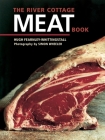 Eating Animals
Eating AnimalsJonathan Safran Foer spent much of his teenage and college years oscillating between omnivore and vegetarian. But on the brink of fatherhood-facing the prospect of having to make dietary choices on a child's behalf-his casual questioning took on an urgency His quest for answers ultimately required him to visit factory farms in the middle of the night, dissect the emotional ingredients of meals from his childhood, and probe some of his most primal instincts about right and wrong. Brilliantly synthesizing philosophy, literature, science, memoir and his own detective work, Eating Animals explores the many fictions we use to justify our eating habits-from folklore to pop culture to family traditions and national myth-and how such tales can lull us into a brutal forgetting. Marked by Foer's profound moral ferocity and unvarying generosity, as well as the vibrant style and creativity that made his previous books, Everything is Illuminated and Extremely Loud and Incredibly Close, widely loved, Eating Animals is a celebration and a reckoning, a story about the stories we've told-and the stories we now need to tell.
 The Compassionate Carnivore
The Compassionate CarnivoreFor most of her life, Catherine Friend was a carnivore who preferred not to consider where the meat on her plate came from—beef didn’t have a face, chicken didn’t have a personality, and pork certainly shouldn’t have feelings. But Friend’s attitude began to change after she and her partner bought a farm and began raising sheep for meat. Friend’s ensuing odyssey through the world of livestock and farming is a journey that offers critical insights—for omnivores and herbivores alike—into how our meat is raised, how we buy it and from whom, and why change is desirable and possible.
From a distressing lesson about her favorite Minnesota State Fair food (pork-chop-on-a-stick) to the surprising gratitude that came from eating an animal she’d raised and loved, Friend takes us on a wild and woolly ride through her small farm (with several brief detours into life on factory farms), along the way raising questions such as: What are the differences between factory, conventional, sustainable, and organic farms, and more importantly, why do we need to understand those differences? What do all those labels—from organic to local to grass fed and pasture raised—really mean? If you’re buying from a small farmer, what are the key questions to ask? How do you find that small farmer, and what’s the best way to help her help you?
In the same witty and warm style that characterized her memoir Hit by a Farm, Friend uses her perspective as a sustainable farmer and carnivore to consider meat animals’ quality of life—while still supporting the choice to eat meat. Regardless of whether you eat meat once a day, once a week, or once a year, your perspective of what goes on your plate—and in your mouth—will never be the same.
 The Face on Your Plate
The Face on Your PlateIn this revelatory work, Jeffrey Moussaieff Masson shows how food affects our moral selves, our health, and the environment. It raises questions to make us conscious of the decisions behind every bite we take: What effect does eating animals have on our land, waters, even global warming? What are the results of farming practices-debeaking chickens and separating calves from their mothers-on animals and humans? How does the health of animals affect the health of our planet and our bodies? And uniquely, as a psychoanalyst, Masson investigates how denial keeps us from recognizing the animal at the end of our fork-think pig, not bacon-and each food and those that are forbidden. The Face on intellectual, psychological, and emotional expertise over the last twenty years into the pivotal book of the food revolution.
 The River Cottage Meat Book
The River Cottage Meat BookFirst published in the United Kingdom, THE RIVER COTTAGE MEAT BOOK quickly became an underground hit among food cognoscenti around the world. Now tailored for American cooks, this loving, authoritative, and galvanizing ode to good meat is one part manifesto on high-quality, local, and sustainable meat production; two parts guide to choosing and storing meats and fowl; and three parts techniques and recipes for roasting, cooking, barbecuing, preserving, and processing meats and getting the most out of leftovers. With this thought-provoking and practical guide, meat eaters can knowledgeably buy and prepare meat for better health and better living, while supporting the environment, vibrant local economies, and respectful treatment of animals.
No comments:
Post a Comment